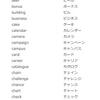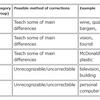Pronunciation Consciousness Raising in the University of Aizu
Kazuaki Yamauchi
Kazuaki Yamauchi
The University of Aizu was established in April of 1993 with the goal of educating and graduating students who would become Japan's leading professionals in computer science and engineering (Kunii, 1994). With respect to English Education, the situation of the university is different from other universities in Japan accredited by the Ministry of Education. First, about half the faculty is from overseas and English is often used as the standard language of communication. Second, English is the international language of computer science.
Because of the need to communicate with foreign faculty members, and because so much computer terminology is based on English, the university curriculum has been planned to include courses which provide its graduates with the ability to communicate effectively in English. Pronunciation is an important part of the curriculum. In this paper, I would like to introduce one method for improving the pronunciation of our students which I think could be usually incorporated into our program of English instruction.
As Rita Wong states (1987), the initial step in planning any curriculum is to look carefully at the background and experiences of the students. Almost all students at Aizu are Japanese nationals who entered the university by taking the normal entrance examination after graduating from a Japanese senior high school. Therefore the curriculum can be made uniform according to the needs of students who have studied English for six years at the secondary level. Unfortunately, the ability of students to pronounce English words well is quite low. English grammar and translation remain the core of the entrance exams. Spoken English is not a component of many university entrance exams and, therefore, very little is taught in high school. Until recently, few students have been required to talk with native speakers of English and, thus, do not realize the importance of good pronunciation for effective communication.
The Japanese language is characterized by the presence of 'loanwords', which have been borrowed from other languages. These words typically are written using the katakana alphabet and pronunciation is adjusted to conform with the conventions of Japanese language. According to my survey in the class of History of the English language taught by Dr. Schaefer in 1997, I found that in the contemporary Japanese writings relating to the computer industry, all Japanese loanwords originate from English. As Pennington (1987) pointed out, Japanese learners have a tendency to pronounce English lexical items in terms of syllables and words learned in a Japanese phonological context. With the present level of pronunciation of our students in mind, I have designed some 'Pronunciation Consciousness Raising Activities'. I feel that if students recognize loanwords as being English, and if they are aware of how and why their pronunciation changes in Japanese, they can automatically increase their English vocabulary as well as develop their level of pronunciation.
First, as an ongoing project, I have students make an English loanword database either in the classroom or as a homework assignment. The database would include the original word in katakana (Romaji) with the corresponding English word. Students would gather English loanwords in Japanese through reading daily newspapers, books, textbooks, technical manuals, signs in a street, labels of daily commodities, etc. and extracting English loanwords from them. After making a general English loanword database, students may produce a database specific to their field of study within computer science and engineering. This practice is good for them to acquire and increase the vocabulary they desire to master. For the students at our university, a computer-related word database would be useful and helpful. Making a loanword database could also be a useful exercise of learning languages for students to study the contrast between loanwords and their origins. An example of an English loanword database is shown in Appendix 1.
Second, the warm-up activity will be introduced. The teacher will prepare the list which shows Japanese loanwords written in katakana with Romaji at the left and the original English words at the right at random. Ask the students to connect the appropriate words. Students will become aware of the general features of loanwords by connecting loanwords with the correct English words as illustrated in Appendix 3. After matching katakana to the English word, the students practice the pronunciation of English one by one after the teacher. The teacher should make the students listen to the sound carefully pointing out the difference between the original and loanword. By this practice, students can aware the difference of pronunciation between loanword and original English word. Students will be more conscious of the loanwords that are introduced in Japanese and be careful to pronounce the original English words by this easy warm-up activity. After the warm-up activity, the teacher will give the students some different loanwords from the list so that they can practice what they learned in the warm-up activity. The object is for students to connect loanwords with the English words that they may have seen, but do not know the meaning of. Again we will repeat the form-focus pronunciation exercise. The teacher demonstrates the pronunciation of real English and students repeat the words and practice them until they will realize the difference and acquire real pronunciation.
As a third step, the teacher give the following information regarding the groups of Japanese loanwords from English that are categorized based on specific feature of each word (Refer to Appendix 2).
Many loanwords have essentially the same pronunciation, or only minor difference is accent, or minor changes to suit the Japanese phonological system.
Some loanwords have been changed because the English sound does not exist in Japanese.
Some loanwords have inserted vowels between consonant clusters in English.
Some loanwords have been shortened.
Some loanwords have been shortened and combined
Some loanwords would fall into more than one group and this is something for students of English think about. Once the students have categorized the words, the class should reconvene to correct the exercise together. The teacher should, again, give the correct pronunciation and form-focused practice, if necessary. The students could also be asked to comment (in Japanese) on why words go into certain groups and suggest rules. For example, how does the Japanese katakana system deal with specific consonant in Group 2? Groups 1and 2 should be very easy for Japanese students to learn once they understand the reasons for the slight changes in pronunciation or accent. As for Group 3, perhaps the teachers can come up with ideas on consonant clusters and how to make Japanese students aware of them. Groups 4 and 5 might be just a matter of straight memorization.
After students learn the five categories of loanwords, have them categorize the words by themselves. The students are required to fill in the blanks of the table based on the five categories mentioned above in Appendix 4. In accordance with each category, the teacher will ask in what categories is the katakana loanword most closely associated with English pronunciation. Again we will practice pronunciation of English after the discussion.
The enormous number of English words used in Japanese should be a great aid to learning English because many English words are already familiar to Japanese students. They are direct borrowings from English words, so that it is easy to analogize the original English word out of English loanwords in Japanese (Categories 1 and 2 above).
On the other hand, there are several implications to adopting too many loanwords. Japanese people often use English in quite creative ways, though with mystifying results for the native speaker of English. Sometimes, international speakers try to pronounce loanwords as they are pronounced in English. However, most Japanese speakers pronounce them according to the Japanese sound system. Therefore, it becomes very difficult for the native speakers of English, i.e., nonnative speakers of Japanese to understand these spoken loanwords. The pronunciation can be so distorted that native speakers are not able to recognize the Japanese version from the original word. For example, a person who is new to Japanese cannot imagine PASOKON denotes" personal computer" (Categories 4 and 5 above).
One factor to consider is transmission of the original meaning when introducing loanwords into Japanese. Words that sound the same, but which have different meanings are called False Friends. Examples include:
"Handle" in Japanese means "steering wheel" in English.
"Back mirror" in Japanese means "rearview mirror" in English.
"Super" in Japanese means "supermarket" in English.
"Mansion" in Japanese means "condominium" in English.
"Paper test" in Japanese means "written test" in English.
If students can distinguish the differences and can implement words as their vocabulary, their English proficiency will improve. Using loanwords may be considered as a drawback by many people, but it is wiser to utilize those loanwords to increase one's vocabulary. Therefore, a loanword database is beneficial and useful to Japanese learners of English, so does the implementation of the database into the pronunciation practice activity.
It has been said that the Japanese language is being degraded by the constant use of English loanwords. In one sense, it is true, but in another sense it is not true. In daily newspapers, magazines, books, and textbooks, you can easily find English loanwords. Sometimes the original meanings of words are changed and distorted. Developing a database of English loanwords would be quite useful for the learners of English. I believe the English loanword database can deepen a learner' s insight into the differences between original English and the corresponding English loanword in Japanese.
In sum, the advantages of the Pronunciation Consciousness Raising Activities are that by using them influence of English loanwords including katakana English can be removed and the vocabulary can be increased rapidly. My philosophy of L2 learning is the student should acquire sufficient knowledge and skills of the L1 before learning an L2. Based on this acquired L1 knowledge, students recognize the difference between original English words and the Japanese version, thereby improving their L2 pronunciation.
Kunii, T. L. (1995). President' s message. In Izzo, J. (Ed.) Center for Language Research 1994 Annual Review. Japan: The University of Aizu.
Pennington, M. (1987). Acquiring proficiency in English phonology: Problems and solutions for the Japanese learner. Nagoya Gakuin Daigaku Gaikokugo Kyoiku, 16, 1-19.
Wong, R. (1987). Learner variables and prepronunciation considerations in teaching pronunciation. In J. Morley (Ed.). Current perspectives on pronunciation (pp. 13-28). Washington, DC: TESOL.






Category of English Loanword in Japanese
